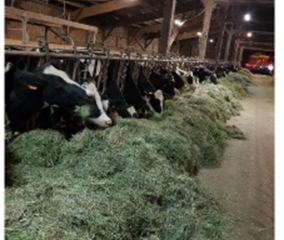Dorf.Connect! Empowering Rural Resilience Through Digital Communication
Germany
Introduction
It all began in the small German village of Deifeld-Wissinghausen. One of its 270 inhabitants was afflicted with a highly aggressive form of lymphoid cancer, and his prognosis allowed for only a scant few weeks. This sparked an enormous grassroots effort for help and support in the village but also a flood of confusing social media sources and rumors. Somebody in the village then took over the initiative to build a web blog to provide clear and official information to coordinate the (in the end very successful) help efforts.
This initiative led to the realization that every village required an efficient communication system, particularly during crises. So out of this truly bottom-up idea became with the help and initiative of LEADER a communication platform in the southern part of the state North-Rhine Westphalia in Germany.
Supported by the cooperation between eight LAGs, the project runs now in over 50 villages. The communication platform consists of individual village websites in combination with an app, that promoted news and events from the websites via instant messages directly to cellphones. The app also functions as a social communication tool in with chat and seek-offer functions.
Presentation of the project
Communication and community life in the villages of South Westphalia revolve around presenting the village and its history, sharing news and events, and fostering a vibrant and modern neighborhood. The project’s objective was to enhance communication in these villages using digital tools, without full digitization, while encouraging real community interaction.
The digital communication technology was enriched with several key components:
- Editorial Teams: Volunteer editorial teams were formed in the participating villages to oversee the content of Village Pages, ensuring regular updates and website maintenance.
- Digitalization Mentor: A dedicated project manager provided active support to the editorial teams in communication strategies, organizational and editorial matters.
- Technical Support: A contracted agency offered technical support, ensuring the smooth operation of the communication platform.
- By integrating the communication platform with village-level editorial teams, technical support, and guidance from digitalization mentors, the project strengthened social cohesion through digitalization. This approach aimed to bridge the digital gap between urban and rural areas.
The project laid the foundation for numerous regional improvements, encouraging village communities to engage with one another. It established a shared and easily accessible communication structure with customizable development potential. Villages were invited to collaborate on developing digital expansion special need components like mobility services, jobs-boards, volunteer networks or integration of new residents.
The communication technology introduced several ways to enhance the resilience of village communities:
The communication platform facilitated better connections and interactions among village communities. It streamlined the flow of information, essential for addressing challenges effectively and it enables the sharing of knowledge and experiences within and between village communities. Residents gained access to valuable information, learned from successful practices in other communities, and expanded their knowledge base. And last, but not least, the platform plays a pivotal role in crisis communication for village communities since timely information strengthens residents’ ability to respond to crises.
The project emerged in response to genuine needs within the initiating LEADER region, Hochsauerland. This region conceived, implemented, and realized the project, actively promoting it to find cooperating partner regions and engaging participating villages.
The communication app is designed to address challenges in rural community life, bolstering resilience and encouraging volunteerism through several key features:
- Efficient Communication
- Connecting Volunteers
- Event Planning
- Knowledge Exchange and Resource Pooling
It serves as a platform to acknowledge and appreciate volunteer contributions, boosting motivation for further engagement as achievements are shared among community members.
Moreover, the app has the potential to address various other challenges in our strategy, including economic, leisure and culture development, mobility and public services, climate-responsible environmental resource use and education and Integration of new residents and social groups.
By fostering efficient communication, connection among volunteers, and resource sharing, it becomes a versatile tool that can positively impact multiple facets of community life and development.
The project Wir sind.digital.Dorf! was executed across 51 villages within 8 Local Action Groups (LAGs) between December 2021 and November 2023. A follow-up initiative (Dorf.Connect! – Empowering Rural Resilience Through Digital Communication), featuring novel components, along with a concurrent resilience study, is currently in the planning stages for the period spanning from 2024 to 2027.
The goal of the accompanying resilience study is to produce an interim and a final report to document the knowledge and experiences gained from implementing the communication app in the village communities. This knowledge can then be made available to other communities, organizations, or decision-makers to learn from the experiences and implement similar initiatives in different contexts. An evaluation study can thus support knowledge transfer and the scalability of such projects.
Pictures
Project Video: (with english Subtitles) https://youtu.be/WiH8yn1e6O8?si=30r7GG7ITMKEfZPJ
Project Flyer:
Project Poster:



